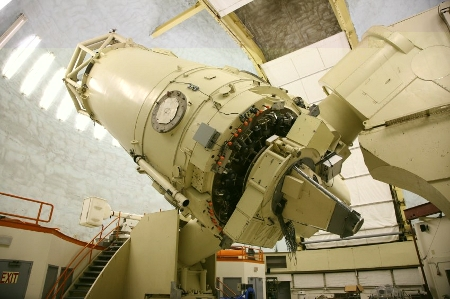Now that we understand the difference between facts and theories, let's see what this means for the 'Big Bang' and evolution theories.
2. The theories of the 'Big Bang' and Evolution
The observable facts of the 'Big Bang' theory
Fact 1
When people use modern telescopes to look at distant galaxies they find that the light looks slightly different from sunlight. The simplest way we can describe this difference is to say that the light from distant galaxies looks slightly red. Hence this observation is known as the 'red shift'.
Fact 2
When we look out into outer space using a telescope already in space, we detect radiation known as cosmic microwave background radiation.

Fact 3
This fact involves the elements in the universe - things like hydrogen and helium, oxygen, nitrogen, carbon and so on. Scientists have noticed that the universe contains mainly elements that are light in weight. The lightest elements, hydrogen and helium, are by far the most common elements in the detectable universe.
Fact 4
The fourth fact that is often mentioned is the fact that galaxies seem evenly spread through space. It does not matter in which direction we look, the spread of galaxies looks basically the same.
These are the four observable facts on which the 'Big Ban' theory is based
The development of the 'Big Bang' theory
It was the first of these observable facts that originally made scientists develop the 'Big Bang' theory.
Scientists believe that the 'red shift' in light coming from space indicates that the light source is moving away from us. This would mean that the universe is expanding.
The other observable facts we have looked at are also consistent with the idea that the universe started with an explosion and is expanding in all directions.
- The background radiation that we detect is considered to be the remains of the 'Big Bang' explosion.
- The 'Big Bang' theory predicts that the lightest elements would be produced first, the heavier elements being built up from them.
- Scientists also realised that the galaxies will be evenly distributed through space if the universe is expanding in all directions following the 'Big Bang'



